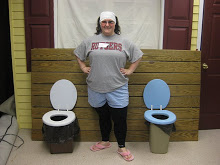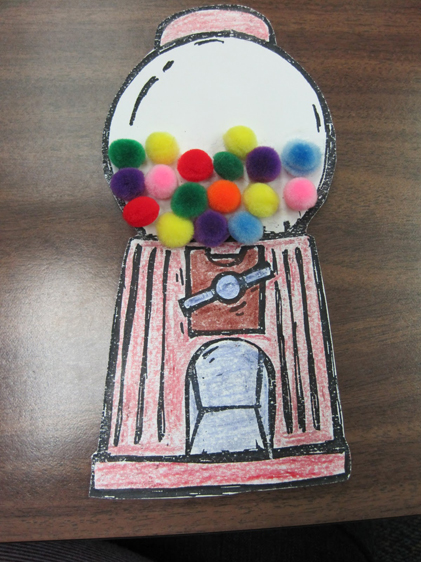
 |
Mrs. Andrea Parson: 4th grade teacher at Cumberland County Elementary School in Burkesville, KY
Below is from Andrea's blog Lights, Camera, Learn
.......................................................................................................................................................................................................
 |
This is from the "Fun Librarian's" blog, who has lots of great projects on her blog. Check them out at You can do this at your library!
One way we like to develop programs at my library is by honoring monthly, daily, or weekly observances. The first Friday in February is Bubble Gum Day. Since we were doing a Valentine's program for our afterschool kids earlier in the month we pushed the bubble gum idea towards the end of the month. So this past Tuesday, I hosted a Bubble Gum program for children in grades K-3.
Originally, I had thought about making bubble gum with the children. But one of the key ingredients- gum base- is not easily found and I didn't want to drive myself crazy looking for it. So I decided that instead of making bubble gum, we'd have a bubble gum blowing contest in between our stories and craft.
Here's an outline of how the program went:
1- Shared some facts about bubble gum with children. These are cut into strips, folded up and placed in a basket for children to pick out of.
2. Read Pop: The Accidental Invention of Bubble Gum by Meghan McCarthy
3. Shared some more facts about bubble gum
4. Read Lester Fizz: Bubble-Gum Artist by Ruth Spiro
5. Bubble gum blowing contest- children lined up against wall and was given one piece of Double Bubble. See who can blow the biggest bubble, see who could blow the most bubbles in a minute, see who could blow the tiniest bubble, etc.
6. Craft- gumball machine. I found a template online for a gumball machine and printed them out on card stock. Have the children color the gumball machine and then glue pom poms for gumballs inside the globe of the machine. I stuck a magnet on the back so it could be used as a fridge magnet. See below for my sample.
 |
Here's what didn't work out so well- the bubble gum blowing contest. Many of the children that attended the program had no front teeth which made it hard for them to blow bubbles. Also, some of the children didn't know how to blow bubbles- this was the first time they would get a chance to do that. But I can tell you this much- it is not easy to teach someone how to blow a bubble. It's even harder to teach someone who doesn't have any front teeth!
I think in the future this might work well as a tween program- having a bubble gum blowing contest, and even making the actual bubble gum. But overall, the children had a great time- and it follows the one idea I always try to convey- that they have a postive experience at the library, because that is what will keep them coming back.
.......................................................................................................................................................................................................
|
This is from The Balanced Literacy Diet There is an abundance of information on this site Stage of Literacy Development: Secondary: |
Preparation:
1) Select a book that will stimulate a persuasive writing topic
.....a. Ensure it is relevant, interesting, and thought provoking to students
.....b. Book can be fiction or non-fiction
.....c. For example, Pop! The Invention of Bubble Gum.
Implementation:
1) Read selected book aloud
2) Stimulate a follow-up discussion
.....a. Have students identify major points of controversy
.....b. Help students to connect ideas from the book to their lives
.....c. Decide upon a central argument
3) Brainstorm a list of points that support the argument
4) Explain that students will be writing a persuasive letter to convince someone about their argument
a. The person who the letter is written to will depend upon the topic etc. (For example, students could write the letter to their parents, the school .....principal, or another classroom teacher)
b. Emphasize that the primary goal of the letter is to persuade or convince the reader
5) Review the format of a letter
.....a. For example, letters must include the date, a salutation, an introductory sentence, persuasive paragraph, and a sign-off
.....b. Remind students that all guesses are accepted
6) Have each student write a persuasive letter
.....a. Conference with individual students as they write and offer feedback
.....b. Remind students to use the ideas and arguments listed on the chart paper to make their writing more convincing
7) Invite students to share their letters or works in progress with the class
Quick Tips
Activity Extensions:
- Invite the letter recipient to come into the class to respond to students or invite them to write back to students
a. Have a celebration if students manage to successfully convince their reader
- Encourage students to do additional research to more fully form their argument
Additional Comments:
- It is assumed that students are familiar with the basic format for writing a letter
- This activity also encourages students to conduct research about the topic so they may develop more fully informed arguments
a. Students can therefore increase content knowledge
- This activity can be powerfully integrated with other subjects including science, history and social science
